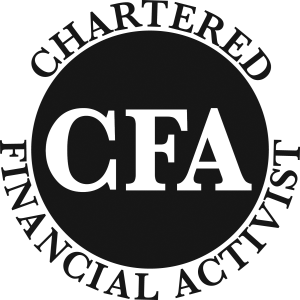Investment Location
Investors who read about the proper investment policies or follow any sound advisers/planners will continually hear the mantra about asset allocation. This is the proper balance of asset classes in your portfolio to maximize what you earn for the amount of risk that you are willing to take. This allocation includes all of the types of assets that you own including things like equity, fixed income, real estate, commodities. Of course remember that asset allocation does not ensure a profit of guarantee against loss.
What is less discussed or understood is the concept of Asset Location. Asset Location is the determination of the distribution of investments across Qualified (retirement, tax-deferred) and non-Qualified accounts in your portfolio. Asset location is a critically important element in the Financial Plan utilized by Financial Coach in our efforts to minimize current and future taxes for our clients.
Qualified accounts (traditional IRA, 401K, 403B) typically hold investments where you were able to deduct all (or most) of your contribution from your taxable income when you made the investment, are able to defer taxes on any earnings or capital gains in the year earned and any distributions (or a portion) are taxed in the tax year when they occur. Each distribution from the Qualified account is included in your tax return and will be taxed as ordinary income. Thus, the distribution is subject to the marginal tax table and can cause a higher effective income tax when added to your other retirement income.
Non-Qualified accounts, on the other hand, hold assets which have been subject to a tax prior to contribution and have no tax deferral of earnings. Additions to the accounts are usually made with dollars that have been subject to income, gift, inheritance or some other type of tax prior to their investment. Interest, dividends and capital gains earned on the investments are taxed in the year earned.
Asset Location leading to more efficient management of taxes arises from several simple propositions:
- Interest is typically generated from savings and fixed income investments.
- Capital gains and qualified dividends (ordinary dividends meeting certain criteria) are essentially generated by stock investments
The critical element of asset Location is how each of the earnings is taxed under the Federal tax code:
- Non-qualified Accounts
- Interest income earned in a non-qualified account is taxed at an income tax rate which is typically higher than the capital gains tax
- Capital gains and qualified dividends earned in a non-qualified account are taxed at the capital gains rate which is usually lower than the income tax rate
- Any earnings (interest, qualified dividend and capital gains) in a Qualified account are taxed at the income tax rate when they are withdrawn
- Investment losses in a Qualified account cannot be used to shelter future investment gains or income
So, the critical lesson in Asset Location is:
- place the maximum reasonable amount of assets earning capital gains and qualified dividends and which have a higher risk of loss into non-Qualified accounts where earnings are taxed at the lower rate
- place the maximum amount of assets earning interest (bonds which have lower volatility) in the retirement and tax-deferred accounts (traditional IRA, 401K, 403B) since interest income is subject to the income tax rate.
The additional benefit of this strategy is that, if the investments (stocks) held outside the Qualified accounts have a loss, they can be sold to generate a capital loss. This capital loss can be used to offset future capital gains and/or income to minimize future taxes. Any losses that occur in Qualified, tax-deferred accounts are only losses. They cannot be used to offset any future gains.
Obviously, the amount and types of investments held by you will help to dictate the asset allocation strategy that is appropriate for your situation. So, you would not necessarily have all of your non-Qualified accounts in stocks or all of you Qualified accounts in bonds. But holding the appropriate types and level of assets in the proper qualified or non-Qualified account will help you maximize your tax efficiency and minimize your tax bill which will give you more money to invest and support your lifestyle.
The conversation with your Financial Planner should be about more tax efficient management within your plan. If you are not having that discussion, call the Financial Coach and Start the Conversation toward creating a more comprehensive and tax effective retirement plan for your household.
This information is not intended to be a substitute for specific individualized tax advice. You should consider discussing your specific tax issues with a qualified tax advisor.




